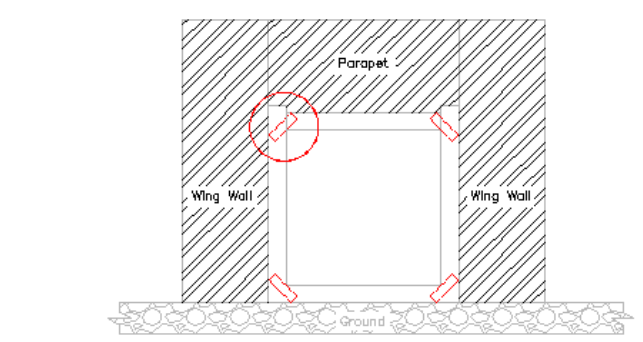1 M.A.Sc. Candidate, Department of Civil Engineering, McMaster University, Hamilton, ON, L8S 4L7, Canada, smithnl2@mcmaster.ca
2 Joe Ng/JNE Consulting Chair in Design, Construction and Management in Infrastructure Renewal, Centre for Effective Design of Structures, Department of Civil Engineering, McMaster University, Hamilton, ON, L8S 4L7, Canada, taitm@mcmaster.ca
3 Technical Expert, AMEC NSS, Toronto, ON, M5G 1X6, Canada, waleed.mekky@amec.com
4 Martini, Mascarin and George Chair in Masonry Design, Centre for Effective Design of Structures, Department of Civil Engineering, McMaster University, Hamilton, ON, L8S 4L7, Canada, eldak@mcmaster.ca
ABSTRACT
With the introduction of the new Canadian Standards for blast resistant design of buildings (CSA S850-12), there is an urgent need to quantify the performance of masonry infill walls against such extreme loads. The focus of the reported study was on evaluating the performance of such walls subjected to air blasts generated by high explosives. The tests included an array of wall design parameters, charge weights and standoff distances. These sets of unique charge weights and standoff distances present a range of scaled-distances, reflecting different explosive threat levels. It was found that the boundary conditions and test setup configuration had major effects on the wall two-way bending behaviour. Observed damage modes included flexure, as well as unexpected shear and combinational flexure-shear patterns. With no reference to these additional damage modes in the blast standards, it is imperative that if further research in this area shows shear being a major contributor to masonry infill wall damage that code provisions are modified to reflect this. This study forms a part of a major research initiative by McMaster University to generate the essential Masonry Blast Performance Database (MBPD) that will facilitate better understanding of reinforced masonry performance under explosions for designers, code committees, regulators and other stakeholders.
KEYWORDS: Flexural Bond Strength, Tensile Bond Strength, Probability, Distribution, Variability, Numerical Analysis.
597.pdf



